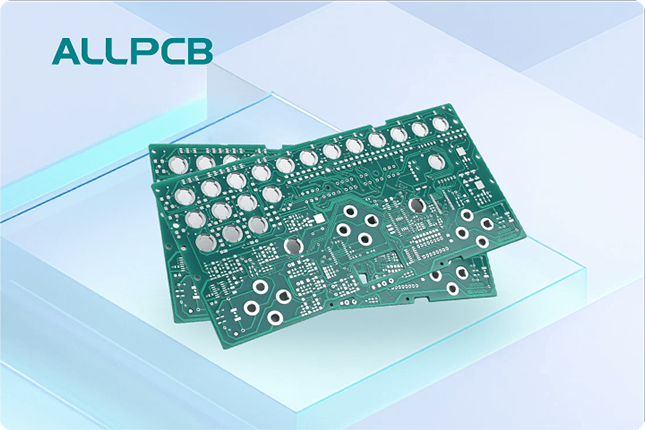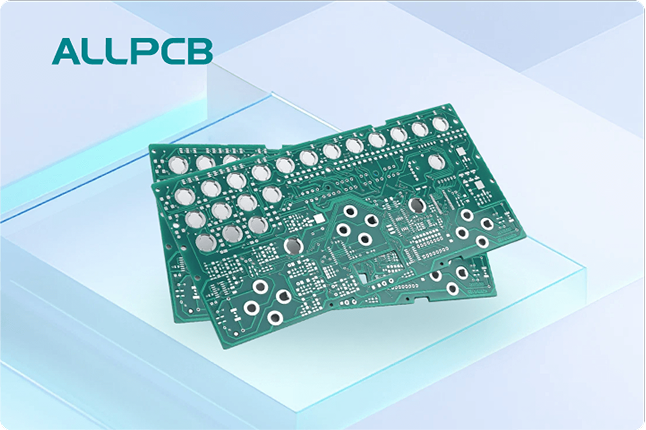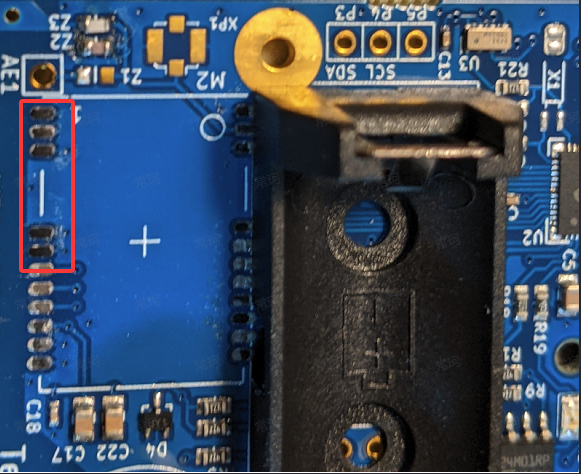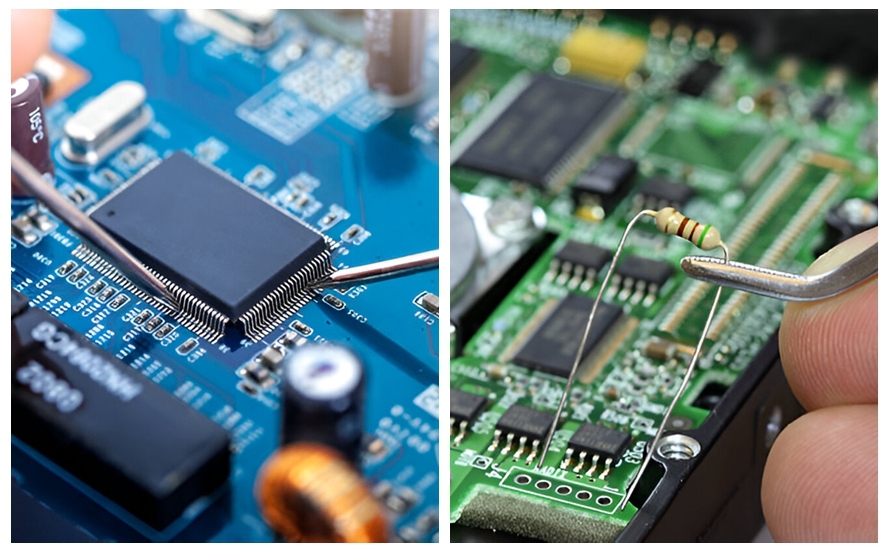If you're looking to master analog PCB in-circuit testing (ICT), you're in the right place. Analog ICT is a crucial process for ensuring the quality and functionality of printed circuit boards with analog components by testing for issues like shorts, opens, and incorrect component values. In this comprehensive guide, we'll dive deep into the techniques and best practices for analog ICT, including resistance measurement, capacitance measurement, and analog component testing. Whether you're an engineer or a manufacturer, you'll find actionable insights to improve your testing process and deliver reliable products.
What is Analog In-Circuit Testing (ICT)?
In-circuit testing, or ICT, is a method used to test populated printed circuit boards (PCBs) by directly probing components and connections. When it comes to in-circuit testing analog circuits, the focus is on verifying the performance of analog components like resistors, capacitors, inductors, and operational amplifiers. Unlike digital circuits that deal with binary signals, analog circuits handle continuous signals, making testing more complex due to factors like noise, tolerance variations, and signal integrity.
Analog ICT helps detect manufacturing defects, such as soldering issues, as well as component failures by measuring parameters like resistance, capacitance, and voltage levels. By identifying faults early in the production process, it reduces costly rework and ensures the final product meets design specifications.
Why Analog ICT Matters in PCB Manufacturing
Analog circuits are found in a wide range of applications, from audio amplifiers to power management systems. Even a small deviation in component values or a minor soldering defect can lead to significant performance issues. For instance, a resistor with a value of 10 kΩ instead of the specified 1 kΩ can drastically alter a circuit's behavior, leading to signal distortion or complete failure.
By implementing robust analog ICT practices, manufacturers can catch these issues before the PCB moves to the next stage of production or reaches the end user. This not only saves time and money but also builds trust in the product's reliability.
Key Techniques for Analog In-Circuit Testing
Testing analog circuits requires precision and an understanding of the unique challenges they present. Below, we explore the core techniques used in in-circuit testing analog circuits, focusing on specific measurements and methods.
1. Resistance Measurement in Analog ICT
Resistance measurement is a fundamental part of analog ICT, as resistors play a critical role in controlling current and voltage in a circuit. During testing, a small test current is applied to the resistor through the ICT probes, and the resulting voltage drop is measured to calculate resistance using Ohm's Law (V = IR).
Best Practices for Resistance Measurement:
- Use Guarding Techniques: Analog circuits are sensitive to stray currents. Guarding isolates the measurement path to minimize interference, ensuring accurate readings, especially for high-impedance components (e.g., resistors above 1 MΩ).
- Account for Tolerances: Resistors often have tolerances of ±1% to ±5%. Set acceptable ranges in your test software to avoid false failures. For example, a 1 kΩ resistor with a ±5% tolerance should read between 950 Ω and 1050 Ω.
- Avoid Parallel Paths: Ensure the test probes isolate the resistor from other circuit elements to prevent misleading measurements caused by parallel resistances.
2. Capacitance Measurement for Analog Components
Capacitance measurement is essential for verifying capacitors in analog circuits, which store and release electrical energy to filter signals or stabilize voltage. ICT systems typically measure capacitance by applying an AC signal (often at 1 kHz) and analyzing the impedance response.
Best Practices for Capacitance Measurement:
- Select the Right Frequency: Use a test frequency that matches the capacitor's typical operating range. For example, electrolytic capacitors used in power supplies may require testing at lower frequencies (e.g., 100 Hz), while ceramic capacitors in high-frequency filters may need testing at 10 kHz or higher.
- Minimize Leakage Effects: Leakage currents can skew capacitance readings. Use short test durations and ensure probes are clean to avoid introducing errors.
- Check for Polarity: For polarized capacitors like tantalum or electrolytic types, ensure the test setup respects polarity to prevent damage during measurement.
3. Analog Component Testing Beyond Basic Measurements
Beyond resistors and capacitors, analog component testing in ICT includes evaluating diodes, transistors, operational amplifiers, and inductors. Each component requires tailored test methods to ensure functionality.
Testing Diodes: ICT systems apply a small voltage to check the forward voltage drop (typically 0.7 V for silicon diodes) and verify reverse bias behavior (no current flow). A faulty diode might show a forward voltage of 0 V (short) or fail to block reverse current (open).
Testing Operational Amplifiers: Op-amps are tested by applying specific input voltages and measuring output responses. For instance, a unity-gain configuration should output a voltage equal to the input. Deviations (e.g., output stuck at supply rail) indicate a fault.
Best Practices for Analog Component Testing:
- Use Component-Specific Test Profiles: Program your ICT system with predefined test conditions for each component type to streamline the process.
- Simulate Real-World Conditions: Where possible, test components under conditions close to their operating environment, such as applying typical input signals to op-amps.
- Account for Temperature Effects: Analog components can vary with temperature. If testing in a controlled environment isn’t possible, note ambient conditions during tests for consistency.
Best Practices for Effective Analog ICT
Implementing the right techniques is only part of the equation. To achieve consistent and reliable results in analog ICT, follow these overarching best practices tailored for analog circuit testing.
1. Design for Testability (DFT)
Before testing even begins, ensure your PCB design facilitates ICT. Analog circuits often have high-impedance nodes or sensitive signal paths that can be challenging to probe.
- Add test points for critical nodes, especially in high-density designs where direct probing might be difficult.
- Space components adequately to allow probe access without risking damage to nearby parts.
- Label test points clearly in schematics and layouts to speed up fixture design and testing.
2. Use High-Quality Test Fixtures
A "bed of nails" fixture is commonly used in ICT to make contact with multiple test points simultaneously. For analog testing, ensure the fixture minimizes noise and crosstalk.
- Use shielded probes to reduce electromagnetic interference (EMI) during testing of sensitive analog signals.
- Regularly maintain fixtures to prevent worn-out probes, which can lead to poor contact and inaccurate measurements.
3. Calibrate Equipment Regularly
ICT equipment must be calibrated to ensure measurement accuracy, especially for analog parameters like resistance and capacitance, where small errors can lead to false results. For instance, a miscalibrated system might measure a 100 pF capacitor as 110 pF, triggering an unnecessary failure.
- Calibrate your ICT system at least monthly or before major production runs.
- Use certified reference components (e.g., a 1 kΩ resistor with 0.1% tolerance) to verify system accuracy.
4. Minimize Noise and Interference
Analog circuits are highly susceptible to noise, which can distort ICT measurements. For example, a noisy environment might cause a voltage reading to fluctuate by ±50 mV, leading to inconsistent results.
- Test in a controlled environment with minimal EMI, such as a shielded test area.
- Use low-noise power supplies during testing to avoid introducing artifacts into measurements.
5. Document and Analyze Test Data
Keep detailed records of test results to identify patterns or recurring issues in your manufacturing process. For instance, if 5% of boards consistently fail capacitance tests on a specific component, it might indicate a sourcing or soldering problem.
- Use software tools to log and analyze ICT data for trends over time.
- Share insights with design and production teams to address root causes of failures.
Challenges in Analog ICT and How to Overcome Them
Testing analog circuits via ICT isn’t without hurdles. Here are common challenges and practical solutions to ensure success.
Challenge 1: High-Impedance Circuits
Analog circuits often include high-impedance nodes (e.g., inputs to op-amps with impedances of 10 MΩ or more), which are prone to noise pickup and measurement errors.
Solution: Use guarding techniques and high-impedance probes designed for low-current measurements to maintain accuracy.
Challenge 2: Component Tolerances
Analog components naturally have wider tolerances compared to digital ones, making it harder to set pass/fail criteria.
Solution: Work with design engineers to define realistic tolerance bands and program these into the ICT system for automated evaluation.
Challenge 3: Complex Signal Paths
Analog signal paths can involve feedback loops or filters that interfere with isolated testing of individual components.
Solution: Use simulation software during the design phase to predict how components interact, and adjust test strategies (e.g., disabling feedback loops temporarily) to isolate measurements.
Tools and Equipment for Analog ICT
Choosing the right tools is critical for effective in-circuit testing analog circuits. Here’s an overview of essential equipment:
- ICT Testers: Automated systems with programmable test sequences for resistance, capacitance, and other measurements. Look for models with high precision (e.g., capable of measuring resistance down to 1 mΩ).
- Bed of Nails Fixtures: Custom fixtures designed to match your PCB layout for simultaneous testing of multiple points.
- Signal Generators and Oscilloscopes: Useful for testing active analog components like op-amps by providing input signals and measuring outputs.
Conclusion: Elevate Your Analog PCB Testing with ICT
Mastering analog ICT is a game-changer for ensuring the quality and reliability of PCBs with analog circuits. By focusing on precise techniques like resistance measurement, capacitance measurement, and comprehensive analog component testing, you can catch defects early and deliver products that meet the highest standards. Implement the best practices discussed—such as designing for testability, minimizing noise, and using calibrated equipment—to streamline your testing process.
At ALLPCB, we’re committed to supporting your journey in PCB manufacturing and testing. With the right approach to in-circuit testing analog circuits, you can achieve consistent results and build trust in your products. Start applying these strategies today and see the difference in your production quality.
 ALLPCB
ALLPCB







